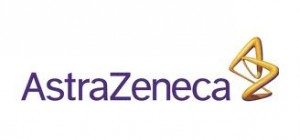AstraZeneca plc (ADR) (NYSE:AZN) just put out data from a late-stage trial that could see some follow through as the new trading week opens. At the close of play on Friday, shares went for $36.63 a piece, up more than 1.33%, adding around $1.2 billion in valuation during the session.
Here’s a look at the drug in question, the data that just hit press and what to watch out for as relates to this program going forward.
The drug, for now, is called PT010 and it’s designed to treat a condition called chronic obstructive pulmonary disease (COPD). This condition is a lung disease that causes long-term breathing problems and poor airflow in sufferers. Symptoms vary widely between individuals in terms of severity, but generally include shortness of breath and cough with heavy sputum production. It’s progressive, so as a patient gets older the condition worsens, and while there are certain treatments on the market already, most target the symptoms as opposed to the underlying disease and tend to reduce in efficacy over time – often to the point where they have little to no clinical benefit.
PT010 is a single inhaler, fixed-dose triple combination therapy that’s designed to deliver three separate complementary active compounds simultaneously. These are budesonide, an inhaled corticosteroid (ICS); glycopyrronium, a long-acting muscarinic antagonist; and formoterol fumarate, a long-acting beta2-agonist.
Each of these drugs serves as a type of treatment that the vast majority of sufferers of COPD take on a regular basis already. The difference with PT010, however, is that it’s able to deliver all three at the same time through one inhaler, dramatically reducing the administration burden on patients.
This isn’t actually an asset that AstraZeneca developed in-house, at least not initially. The company picked it up as one of the primary assets associated with its buyout of Pearl Therapeutics back in 2013, which cost the company $560 million and has associated with it a further $450 million earmarked for clinical and regulatory milestones tied to the success of this asset and a few others that came bundled in with the company’s then-in-development pipeline.
So, what did the data show?
The trial was a randomized, double-blind, parallel-group, 24-week, chronic-dosing, multi-center trial called KRONOS, and was set up to demonstrate that treatment with PT010 could bring about a statistically significant improvement compared with dual combination therapies, which are the current standards of care in this space. The endpoints were lung function based on forced expiratory volume in one second (FEV1) assessments. Biotech investors may be familiar with this endpoint from cystic fibrosis trials.
There were seven of these lung function endpoints in total and, as per the data that just hit press, the drug hit on six out of the seven.
On top of these seven lung function endpoints, there were a couple of additional primary endpoints, both of which were rooted in the triple combination demonstrating non-inferiority as compared to another inhalable drug called PT009.
PT010 hit both of these two additional non-inferiority endpoints, bringing the total haul to eight out of nine endpoints hit.
There were no safety or tolerability issues associated with treatment, at least none outside of those generally linked to this sort of inhalable treatment, meaning adverse events shouldn’t weigh on the FDA’s decision as to the approvability of the drug.
Which brings us to what we’re looking out for next.
This program is now all about getting the numbers in front of the global regulatory agencies so as to facilitate a route to market. There is an ongoing trial in the US that’s looking at the asset in COPD exacerbations and it’s not set to close out until early next year, so AZN is likely going to wait until some point during 2019 before submitting to the FDA. The same is true of the European regulatory submission.
Chinese and Japanese submissions should be complete before the end of this year so there’s the potential for some Asian green lights before the middle of 2019.
Enjoyed this read? Read this next: Biotechnology Movers: Karyopharm And Synergy
